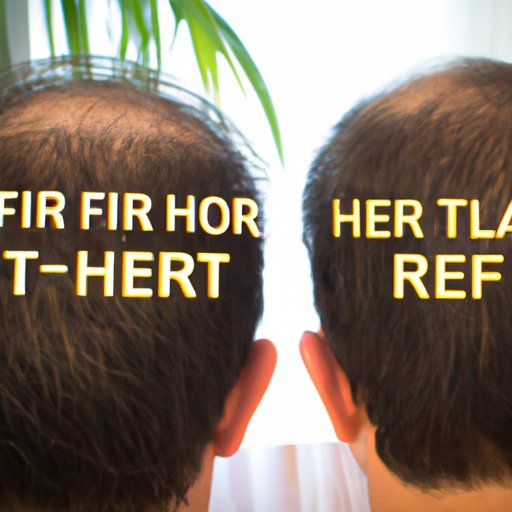Introduction: Overview of Hair Transplant Process
A hair transplant is a medical procedure that involves transferring healthy hair follicles from one area of the scalp to another. It is used to treat baldness and hair loss caused by genetics, age, or other factors. The goal of a hair transplant is to restore natural-looking hair and improve self-confidence.
There are two main types of hair transplants: Follicular Unit Transplant (FUT) and Follicular Unit Extraction (FUE). Each has its own advantages and disadvantages, and understanding the differences between them will help you decide which option is best for you.
Types of Hair Transplants and their Pros and Cons
FUT (Follicular Unit Transplant): FUT is the traditional method of hair transplantation, and it involves surgically removing a strip of skin with healthy hair follicles from the back or sides of the scalp. The strip is then divided into individual grafts, which are transplanted into the areas of the scalp where hair loss has occurred.
Advantages: FUT is more cost-effective than FUE, and typically results in a greater number of hairs being transplanted in a single session. It also produces more permanent results than FUE.
Disadvantages: FUT can be painful and leave a visible scar on the back or sides of the scalp. It also requires a longer recovery period than FUE.
FUE (Follicular Unit Extraction): FUE is a newer technique that involves extracting individual hair follicles from the donor area and transplanting them into the recipient area. This method does not require a surgical incision and can produce natural-looking results.
Advantages: FUE is less invasive than FUT and does not leave a visible scar. It also requires a shorter recovery period and allows for more precise placement of the grafts.
Disadvantages: FUE is more expensive than FUT and typically results in fewer hairs being transplanted in a single session. It also produces less permanent results than FUT.

Explaining FUT and FUE Hair Transplants
FUT Hair Transplant: The FUT hair transplant process begins with the patient undergoing a physical examination by the surgeon to determine if they are a suitable candidate for the procedure. The surgeon then marks out the donor area and administers local anesthesia. Once the patient is numbed, the surgeon removes a strip of skin from the donor area and divides it into individual grafts. The grafts are then carefully implanted into the areas of the scalp where hair loss has occurred.
FUE Hair Transplant: The FUE hair transplant process begins with the patient undergoing a physical examination by the surgeon to determine if they are a suitable candidate for the procedure. The surgeon then marks out the donor area and administers local anesthesia. Once the patient is numbed, the surgeon uses a tiny punch tool to extract individual hair follicles from the donor area. The follicles are then carefully implanted into the areas of the scalp where hair loss has occurred.

Understanding the Different Stages of a Hair Transplant
Pre-operative stage: During this stage, your doctor will assess your scalp and hair condition and discuss your expectations. Your doctor will also take photos of your scalp to document the progress of your treatment.
Surgery: During the surgery, your doctor will numb the donor and recipient areas with local anesthesia. The surgeon will then remove a strip of skin from the donor area or use a tiny punch tool to extract individual hair follicles from the donor area. The grafts are then carefully placed in the recipient area.
Post-operative stage: After the surgery, your doctor will provide instructions for care and follow-up visits. You may experience some swelling, redness, and itching in the recipient area, but these should resolve within a few days. You will also need to avoid strenuous activities, direct sunlight, and smoking during this time.
Benefits of a Hair Transplant
A hair transplant can produce natural-looking results that last for many years. It can also improve self-confidence and help you feel more comfortable with your appearance.

Potential Risks and Complications from a Hair Transplant
Although a hair transplant is generally safe, there are some potential risks and complications associated with the procedure. These include infection, bleeding, poor healing, scarring, and unnatural-looking results. It is important to discuss these risks with your doctor before undergoing a hair transplant.
Conclusion
A hair transplant is a medical procedure that involves transferring healthy hair follicles from one area of the scalp to another. It is used to treat baldness and hair loss caused by genetics, age, or other factors. There are two main types of hair transplants: FUT and FUE. Understanding the differences between them will help you decide which option is best for you. The process for each type of hair transplant involves a pre-operative stage, surgery, and post-operative stage. A hair transplant can produce natural-looking results that last for many years, but there are also potential risks and complications associated with the procedure. It is important to discuss these risks with your doctor before undergoing a hair transplant.


